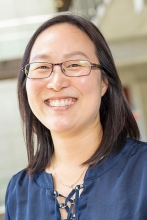MAE Seminar: Multiscale Multiphysics Design Optimization (M2DO) via Level Set Topology Optimization

Abstract: Topology optimization is able to provide intuitive and innovative design solutions, and a performance improvement (e.g. weight savings) in excess of 50% is commonly demonstrated in a wide range of engineering design problems. With the rise of advanced materials and additive manufacturing, topology optimization currently is attracting much attention. This presentation will introduce topology optimization in structural design, fiber composites and architected material. It will also include more recent advances in topology optimization: multiscale design optimization is breaking down the barrier between material and structural designs. Another direction of interest in large-scale topology optimization uses the latest sparse data structures tailored to a novel level set method. We have demonstrated an order of magnitude improvement on both the memory footage and the computation time. These efforts represent a pathway to applying topology optimization for complex multiphysics multifunctional structures, which may be too complex to rely on designers’ intuition.
Bio: H Alicia Kim is the Jacobs Faculty Scholar and professor in the Structural Engineering Department at UC San Diego and leads the Multiscale Multiphysics Design Optimization (M2DO) lab. Her interests are in level set topology optimization, multiscale and multiphysics optimization, modeling and optimization of composite materials and multifunctional structures. She has published over 200 journal and conference papers in these fields including award-winning papers at the AIAA conferences and World Congresses on Structural and Multidisciplinary Optimization. Kim received a prestigious EPSRC Fellowship for Growth. Her research in topology optimization began in the 90s at the University of Sydney, Australia, where she developed one of the first boundary based topology optimization methods. She continued her research at the University of Warwick and the University of Bath for 15 years before moving to the current position in 2015.
Share
Upcoming Events
-
MSE Special Seminar: Architecting 3D Complex Materials for Sustainability
-
MSE Special Seminar: Decarbonizing Industries for a Climate-resilient Future - From Renewable Energy to Sustainable Material Recovery
-
CEE Seminar: BIM and the Digital Twin
-
MSE Special Seminar: Revolutionizing Battery Technology - Engineering Quantum Materials for Enhanced Safety and Performance in Solid Electrolytes
-
MSE Special Seminar: Designing Sustainable Soft Matter from the Molecule Up
